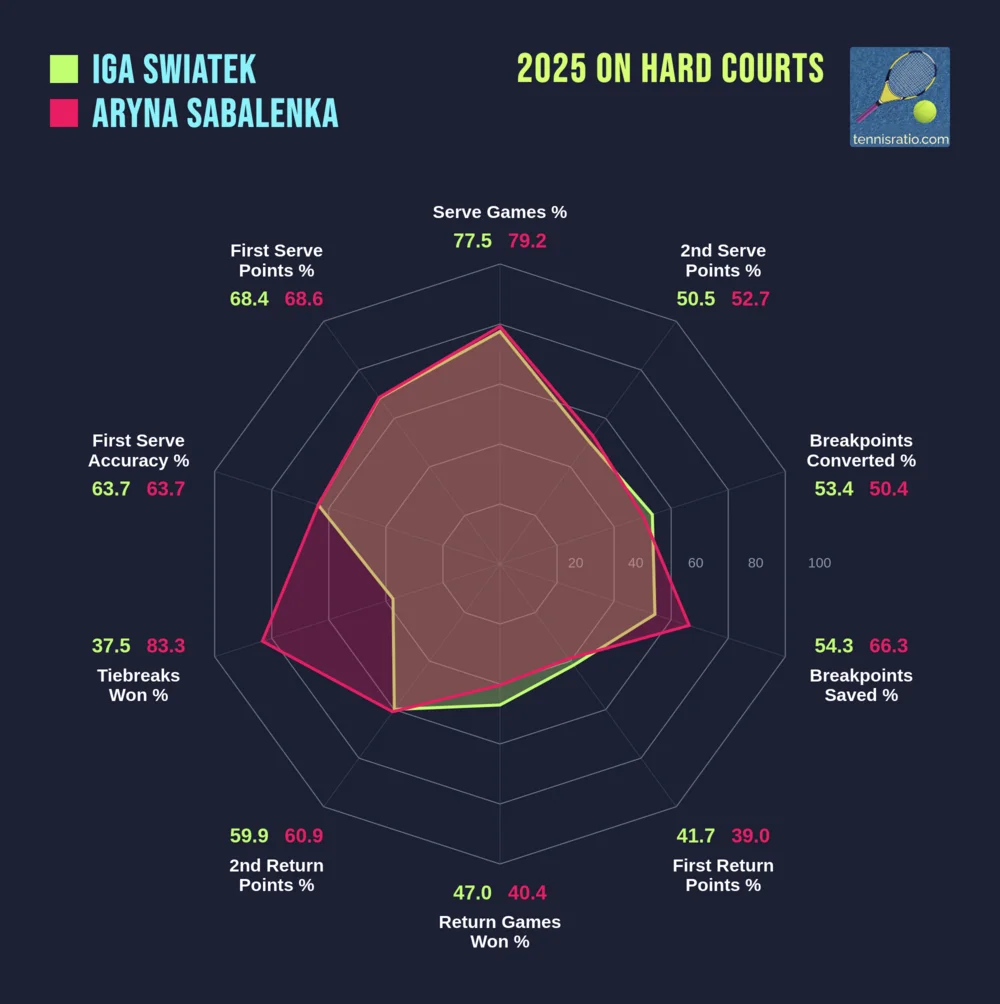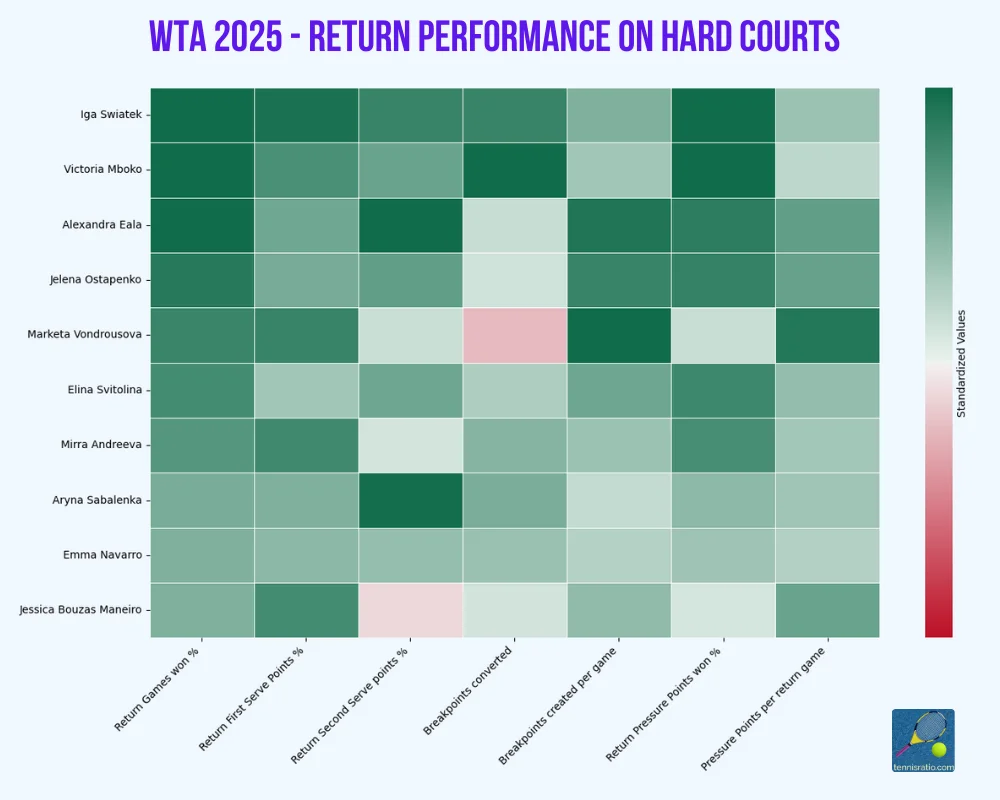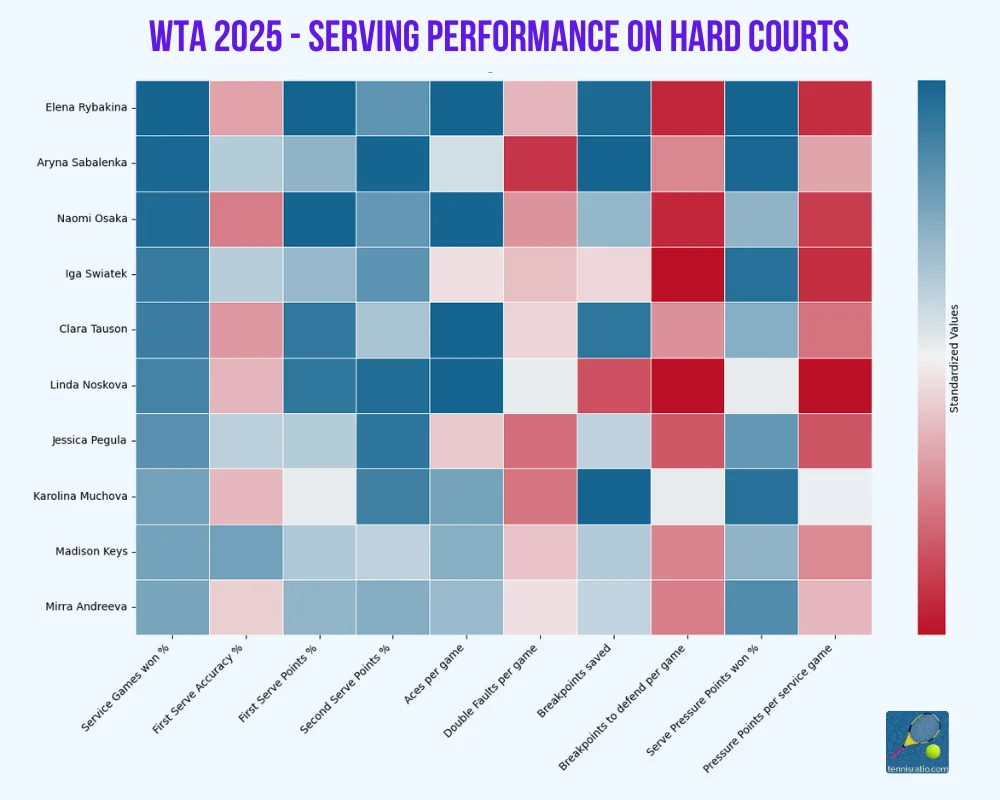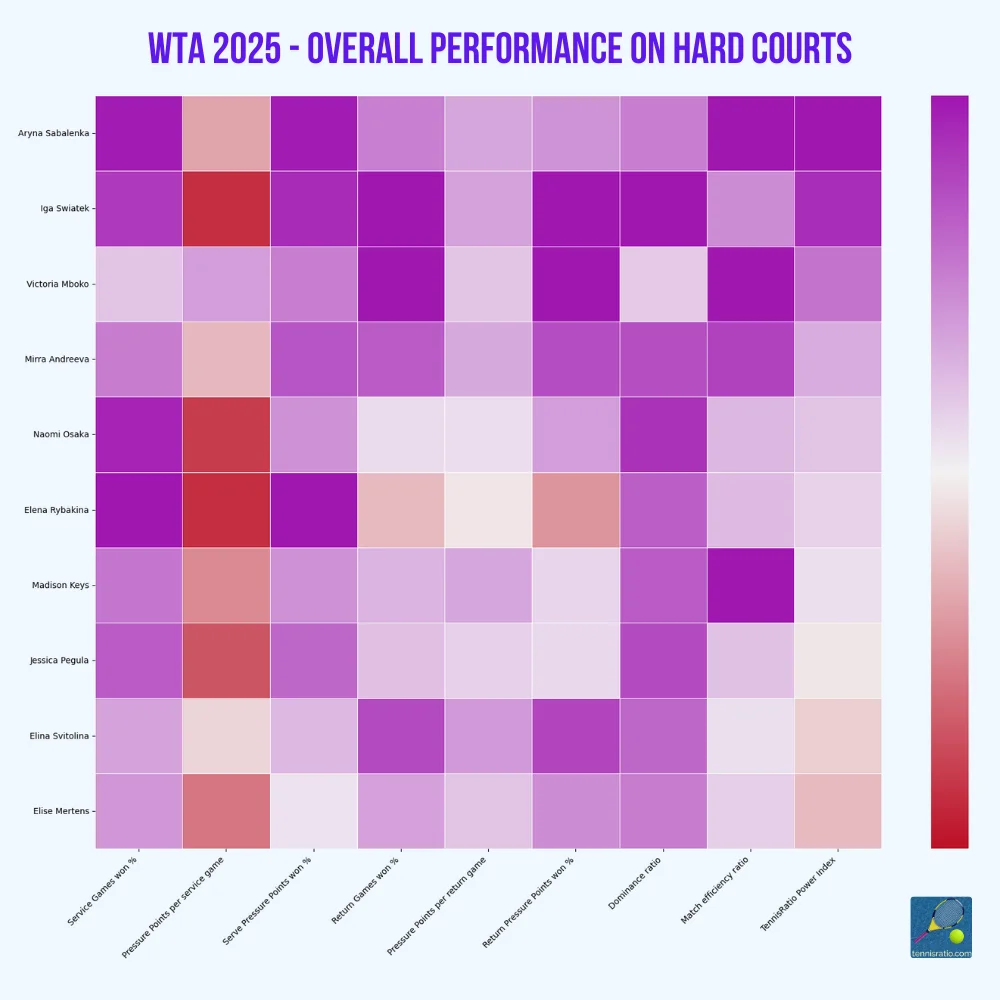This year's US Open will begin with a very high bar set after the dynamics of events at all other Grand Slam tournaments that have made up the current season. During the spring Roland Garros, for the first time in 41 years, both in the men's and women's finals, players seeded 1 and 2 competed for the Grand Slam title. However, the rest of the season hasn't been equally predictable, especially in the women's competition, which has so far produced three different Grand Slam champions in 2025, as well as many surprises and new winners in WTA 1000 tournaments.
Game of Thrones: Świątek vs Sabalenka
Fans' eyes will be directed toward Flushing Meadows mainly due to the rivalry between Iga Swiatek and Aryna Sabalenka, which just two months ago didn't seem to be heading toward a state where both players would again be competing for leadership in the WTA ranking. Although the difference in the official ranking is still substantial, in the WTA Race ranking Sabalenka leads by only 507 points after the Cincinnati tournament, which unfolded as best as it could for the Pole.
Świątek played in her first hard court final in a year and a half and won this tournament in "her" style from two-three years ago, doing so almost without greater effort. Iga didn't lose a single set on her way to the title and spent 3 hours and 20 minutes less on court than her final opponent – Jasmine Paolini. It was the best possible, economical style to reach for the first trophy on HC since March of last year, especially considering the approaching challenges in New York.
Besides that, Świątek's game also inspired optimism, especially her serving disposition – in three matches she recorded over 80% of points won after the first serve, including 82% in the semifinal against Elena Rybakina.
Sabalenka's Demons
Sabalenka has been at the opposite pole in recent weeks. Her season, despite leading both ranking lists, with an excellent record of 23 wins in 26 matches on hard courts, can be considered somewhat disappointing. The world number one has won "only" three tournaments this season – in Brisbane, Miami, and most recently in Madrid, 5 months ago.
None of them, however, was a tournament with the highest stakes, and along the way she suffered unexpected losses in Grand Slam finals, where she was the heavy favorite against Madison Keys, and also let slip from her hands the final against Gauff in Paris despite leading in the match. The demons that haunted Sabalenka 2 years ago returned then, when she couldn't close out semifinal matches against Karolina Muchova at RG and Ons Jabeur at Wimbledon despite being the favorite and having quite comfortable leads in both matches.
The lack of success in the biggest tournaments certainly sits in the Belarusian's head, who back in April during a press conference before the Stuttgart tournament, when asked about her successful start to the season, answered somewhat jokingly that she would rather exchange those successes for a win in Melbourne. Subsequent "slip-ups" throughout the season certainly didn't boost Sabalenka's morale, who looked quite helpless against Rybakina in the last match in Cincinnati.

New Generation Knocking at the Door
This hard court season has also brought the emergence of young aspiring stars who have begun to convert their potential into concrete, spectacular achievements. The year 2025 has so far brought three new WTA 1000 champions on HC, starting with the successes of Mirra Andreeva and Amanda Anisimova during the February swing in the Middle East, and the recent sensation of Victoria Mboko's victory on home soil in Montreal.
The Canadian, who will turn 19 next week, is the most surprising name in this group, as until March this year she was successfully competing on ITF courts. Andreeva and Anisimova are already known figures in the world's elite, though successes from several months ago allowed them to start establishing their position among the absolutely best players – Andreeva followed up by winning in Indian Wells and recording solid performances in the rest of the season, currently placing 5th on the WTA Race list. Anisimova later reached the Wimbledon final and occupies 6th place in the mentioned ranking.
It's hard to see Mboko as a favorite to triumph at the US Open, considering that the young Canadian will be dealing with significant interest and pressure from media and fans for the first time in her career.
Statistical Revelations
Statistics from hard court matches this season, including only main draw matches from WTA tournaments, show however that with her rather small data sample (matches in Montreal, Washington, and Miami), Mboko places third in the TennisRatio Power Index averaging key areas of serve, return, handling pressure points, court dominance, and converting it into match-winning efficiency.
This is especially due to excellent return disposition, particularly the average number of breakpoints created per game (as many as 0.84 compared to, for example, 0.88 by Świątek) and percentage of pressure points won on return – as much as 50.2%, the second result in the field, also behind the Pole (50.25%). Alexandra Eala also performs excellently in return statistics – another sensational teenager who created a sensation during the Miami tournament.

Queen of Serve Awaits Breakthrough
Among the best servers, of course, Elena Rybakina couldn't be missing, leading in winning service games (81.5%), as well as points won after first serve (74.2%) and average number of aces per game (0.58). Rybakina, who two years ago was touted as a candidate to complete the women's "big three" alongside Sabalenka and Świątek, has had several problematic months behind her, but recent weeks look very promising in her performance, which is reflected in the aforementioned numbers.
Rybakina on her day can, for example, leave Aryna Sabalenka without arguments in a direct encounter (the recent Cincinnati quarterfinal), but she also experiences days more often than rarely when she doesn't live up to her great potential. The Kazakh awaits a breakthrough, patiently enduring subsequent disappointments such as the painfully lost two semifinals in a row against Fernandez in Washington (serving for the win in the second set), against Mboko in Montreal (didn't convert a match point), or the memorable loss to Sabalenka in the Berlin quarterfinals despite leading 6-2 in the deciding tiebreak.
If we believe that "there are no defeats, only lessons" and add to that Rybakina's even and stable form at a high level (three semifinals in a row though without final success), then perhaps these lessons will pay off precisely in New York, where all other tournament favorites will want to avoid Rybakina on their path in the draw. And a blockbuster match with one of the players seeded between 5 and 8 could happen as early as the fourth round, as Rybakina will most likely be seeded number 9.
Among the best servers, it's also worth highlighting Naomi Osaka, who under coach Tomasz Wiktorowski showed form in Montreal reminiscent of her best years. The question is how this small sample will translate to performance at the US Open, where the Japanese player will play as a seeded player for the first time in several seasons.

American Paradox
Events of recent weeks have led to quite a paradox. Americans have won two of three Grand Slam tournaments, and in the third one of them reached the final. Four representatives of the hosts will enter the tournament in New York as top-ten players. Despite this, it's futile to see any of the US tennis players as one of the sure favorites for the title.
There is, of course, Coco Gauff, who will focus all observers' attention as the defending champion and recent Roland Garros winner. After winning in Paris, however, Gauff experienced a significant drop in form. Her grass season, which consisted of only two lost matches, was forgettable. Performances in August "thousands" were decorated with masses of unforced errors, absurdly repeating double faults, and the fact that Gauff returned to old habits where she couldn't trust her forehand for the life of her.
Madison Keys celebrated the best period in her career, recording a dream start to the season in Australia, but since then has only reached the semifinals twice (Indian Wells and Berlin), also recording several sensational losses along the way or struggling mercilessly with lack of consistency in her game.
Jessica Pegula recorded an excellent first half of the season, but since winning in Bad Homburg hasn't been able to win two matches in one tournament (including the shocking loss to Elisabetta Cocciaretto in the first round of Wimbledon and the recent lost match to Magda Linette in Cincinnati).
Amanda Anisimova showed a very high ceiling of her possibilities this season, but this ceiling is often balanced by matches in which the 2025 Wimbledon finalist doesn't look ready to compete psychophysically (of which the final in London itself was the best example). Added to this is Emma Navarro, who has been permanently stationed around the top 10 for over a year, but recently has also been nowhere to be found in the decisive phases of individual tournaments.
Evidence of this temporary "slump" (though such a crisis could probably be wished upon any nation competing on world courts) is the fact that only Keys and Pegula are on the list of the top 10 players in the overall TennisRatio statistical ranking on hard courts this calendar year.

This ranking shows that the two main favorites to win the US Open stand apart from the rest of the field, and a repeat of the Paris scenario, when the two highest-seeded players met in the final, is highly likely. Watching a final with such high stakes between Sabalenka and Świątek both being simultaneously in their high form would be a great celebration of world tennis.
However, stories from this season have shown that we must count on the guard of young aspiring talents and players who have something to prove and show their readiness to play for high stakes based on numbers and statistics.
